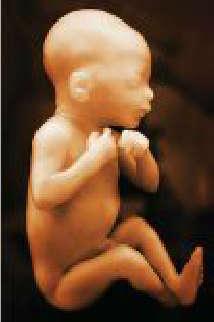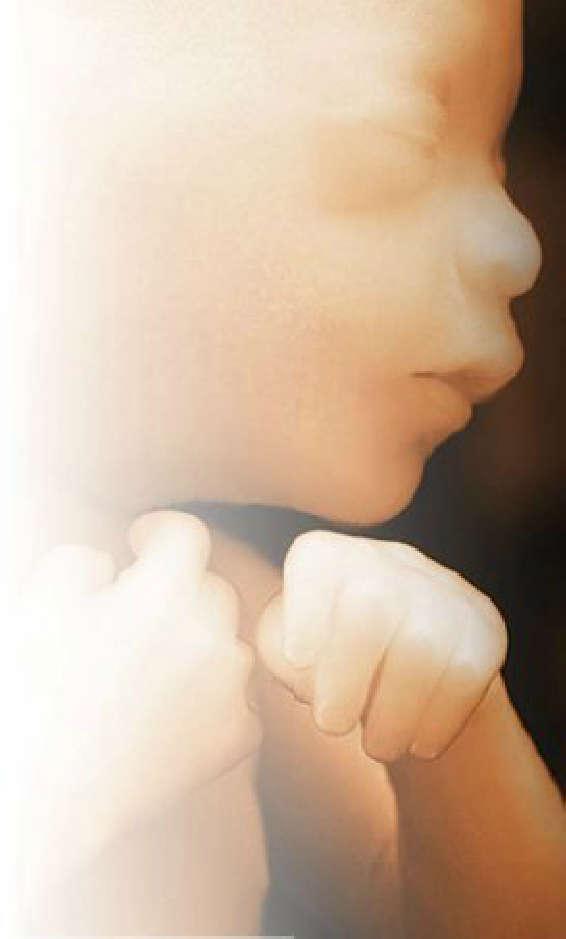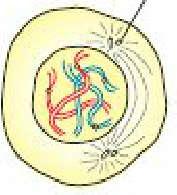LANGMAN’S MeIca| Embr’oogly
.Sadler
T.W.Sadler,PhD
Consultant,BirthDefectsPrevention Sheridan,MadisonCounty,Montana
AdjunctProfessorofPediatrics UniversityofUtah
VisitingProfessorofEmbryology EastTennesseeStateUniversity QuillenSchoolofMedicine SeniorScholar GreenwoodGeneticsCenter Greenwood,SouthCarolina
ComputerIllustrationsby SusanL.Sadler—Redmond
ScanningElectronMicrographsby KathyTosney
UltrasoundImagesby JanByrneand HythamImseis
AcquisitionsEditor:CrystalTaylor
DevelopmentEditor:AndreaVosburgh
EditorialCoordinator:LaurenPecarich
ProductionProductManager:DavidSaltzberg
MarketingManager:MichaelMcMahon
ManufacturingCoordinator:MargieOrzech DesignCoordinator:ElaineKasmer Compositor:AbsoluteService,Inc.
FourteenthEdition
Copyright©2019WoltersKluwer
Thirteentheditioncopyright©2015byWoltersKluwerHealth.©2012byLippincottWilliams&Wilkins, aWoltersKluwerbusiness.©2010byLippincottWilliams&Wilkins.©2006byLippincottWilliams& Wilkins.©2004byLippincottWilliams&Wilkins.©2000byLippincottWilliams&Wilkins.©1995by Williams&Wilkins.©1990byWilliams&Wilkins.©1985byWilliams&Wilkins.©1981byWilliams &Wilkins.©1975byWilliams&Wilkins.©1969byWilliams&Wilkins.©1963byWilliams&Wilkins. Allrightsreserved.Thisbookisprotectedbycopyright.Nopartofthisbookmaybereproducedor transmittedinanyformorbyanymeans,includingasphotocopiesorscanned-inorotherelectronic copies,orutilizedbyanyinformationstorageandretrievalsystemwithoutwrittenpermissionfromthe copyrightowner,exceptforbriefquotationsembodiedincriticalarticlesandreviews.Materialsappearing inthisbookpreparedbyindividualsaspartoftheirofficialdutiesasU.S.governmentemployeesare notcoveredbytheabove-mentionedcopyright.Torequestpermission,pleasecontactWoltersKluwerat TwoCommerceSquare,2001MarketStreet,Philadelphia,PA19103,viaemailatpermissions@lww.com, orviaourwebsiteatshop.lww.com(productsandservices).
987654321
PrintedinChina
LibraryofCongressCataloging-in-PublicationData
Names:Sadler,T.W.(ThomasW.),author.
Title:Langman’smedicalembryology/T.W.Sadler;computerillustrationsby SusanL.Sadler-Redmond;scanningelectronmicrographsbyKathyTosney; ultrasoundimagesbyIanByrneandHythamImseis.
Description:Fourteenthedition.Philadelphia:WoltersKluwer,[2019] Includesindex.
Identifiers:LCCN2018029658ISBN9781496383907(paperback)
Subjects:MESH:EmbryonicDevelopmentFetalDevelopmentCongenital Abnormalities
Classification:LCCQM601NLMQS604DDC612.6/4--dc23LCrecordavailableat https://lccn.loc.gov/2018029658
Thisworkisprovided“asis,”andthepublisherdisclaimsanyandallwarranties,expressorimplied, includinganywarrantiesastoaccuracy,comprehensiveness,orcurrencyofthecontentofthiswork.
Thisworkisnosubstituteforindividualpatientassessmentbaseduponhealthcareprofessionals’examinationofeachpatientandconsiderationof,amongotherthings,age,weight,gender,currentorprior medicalconditions,medicationhistory,laboratorydata,andotherfactorsuniquetothepatient.Thepublisherdoesnotprovidemedicaladviceorguidanceandthisworkismerelyareferencetool.Healthcare professionals,andnotthepublisher,aresolelyresponsiblefortheuseofthisworkincludingallmedical judgmentsandforanyresultingdiagnosisandtreatments.
Givencontinuous,rapidadvancesinmedicalscienceandhealthinformation,independentprofessional verificationofmedicaldiagnoses,indications,appropriatepharmaceuticalselectionsanddosages,and treatmentoptionsshouldbemadeandhealthcareprofessionalsshouldconsultavarietyofsources.When prescribingmedication,healthcareprofessionalsareadvisedtoconsulttheproductinformationsheet(the manufacturer’spackageinsert)accompanyingeachdrugtoverify,amongotherthings,conditionsofuse, warningsandsideeffects,andidentifyanychangesindosagescheduleorcontraindications,particularly ifthemedicationtobeadministeredisnew,infrequentlyusedorhasanarrowtherapeuticrange.Tothe maximumextentpermittedunderapplicablelaw,noresponsibilityisassumedbythepublisherforany injuryand/ordamagetopersonsorproperty,asamatterofproductsliability,negligencelaworotherwise, orfromanyreferencetoorusebyanypersonofthiswork. shop.lww.com




Everystudentwillbeaffectedbypregnancy,eithertheirmother’s, becausewhathappensinthewombdoesnotnecessarilystayin thewomb,orbysomeoneelse’s.Ashealthcareprofessionals,youwilloften encounterwomenofchildbearingagewhomaybepregnant,oryoumay havechildrenofyourown,ormaybeitisafriendwhoispregnant.Inany case,pregnancyandchildbirtharerelevanttoallofus,andunfortunately, theseprocessesoftenculminateinnegativeoutcomes.Forexample,50%of allembryosarespontaneouslyaborted.Furthermore,prematurityandbirth defectsaretheleadingcausesofinfantmortalityandmajorcontributorsto disabilities.Fortunately,newstrategiescanimprovepregnancyoutcomes, andhealthcareprofessionalshaveamajorroletoplayinimplementing theseinitiatives.However,abasicknowledgeofembryologyisessentialto thesuccessofthesestrategies,andwiththisknowledge,everyhealthcare professionalcanplayaroleinprovidinghealthierbabies.
Toaccomplishitsgoalofprovidingabasicunderstandingofembryology anditsclinicalrelevance,Langman’sMedicalEmbryologyretainsitsunique approachofcombininganeconomyoftextwithexcellentdiagramsand clinicalimages.Itstressestheclinicalimportanceofthesubjectbyproviding numerousclinicalexamplesthatresultfromabnormalembryological events.Thefollowingpedagogicfeaturesandupdatesinthe14thedition helpfacilitatestudentlearning.
OrganizationofMaterial:Langman’sMedicalEmbryologyisorganized intotwoparts.llqefirstprovidesanoverviewofearlydevelopment fromgametogenesisthroughtheembryonicperiod.Alsoincludedin thissectionarechaptersonplacentalandfetaldevelopmentaswellas prenataldiagnosisandbirthdefects.llqesecondpartofthetextprovides adescriptionofthefundamentalprocessesofembryogenesisforeach organsystem.
ClinicalCorrelates:Inadditiontodescribingnormalevents,each chaptercontainsclinicalcorrelatesthatappearinhighlightedboxes.This materialisdesignedtodemonstratetheclinicalrelevanceofembryology andtheimportanceofunderstandingkeydevelopmentaleventsasafirst steptoimprovingbirthoutcomesandhavinghealthierbabies.Clinical picturesandcasedescriptionsareusedtoprovidethisinformation,and thismaterialhasbeenincreasedandupdatedinthisedition.
Genetics:Becauseoftheincreasinglyimportantroleofgeneticsand molecularbiologyinembryologyandthestudyofbirthdefects,basic geneticandmolecularprinciplesarediscussed.llqefirstchapterprovides anintroductiontomolecularprocesses,definestermscommonlyused ingeneticsandmolecularbiology,anddescribeskeypathwaysused
inembryonicdevelopment.Then,throughoutthetext,majorsignaling pathwaysandgenesthatregulateembryologicaldevelopmentare identifiedanddiscussed.
ExtensiveArtProgram:Theartworkhasalwaysbeendesignedto enhanceunderstandingofthetextandincludesfour-colorlinedrawings, scanningelectronmicrographs,andclinicalpictures.Onceagain,artwork hasbeenadded,especiallytoChapter18,toillustratenewconceptsin developmentofthecentralnervoussystem,diaphragm,ear,andother structures.
Summary:Attheendofeachchapterisasummarythatservesasa concisereviewofthekeypointsdescribedindetailthroughoutthechapter. Keytermsarehighlightedanddefinedinthesesummaries.
ProblemstoSolve:Problemsrelatedtothekeyelementsofeach chapterareprovidedtoassistthestudentsinassessingtheirunderstanding ofthematerial.Detailedanswersareprovidedinanappendixattheback ofthebook.
Glossary:Aglossaryofkeytermshasbeenexpandedandislocatedin thebackofthebook.
thePointWebsite:Thissiteforstudentsandinstructorsprovidesan interactivequestionbankofUSMLEboard-typequestions.Teachingaids forinstructorsarealsoprovidedintheformofanimagebankandaseries oflecturesonthemajortopicsinembryologypresentedinPowerPoint withaccompanyingnotes.
IhopeyoufindthiseditionofLangman’sMedicalEmbryologytobean excellentresourceforlearningembryologyanditsclinicalsignificance. Together,thetextbookandonlinesite,thePoint,aredesignedtoprovidea user-friendlyandinnovativeapproachtounderstandingthesubject.
T.W.Sadler Sheridan,MT
Placode:Alocalthickeningintheembryonicectodermlayerthatdevelopsinto asensoryorganorganglion.
ODETOAPLACODE
Thereoncewasaflatsheetofcells Thatwerestumpyanduglyashell; Butonedaytheyarose,stoodtallontheirtoes, anddeclaredtheywerethebestcellsofall.
Presumptuouslytheycriedthattheirlineagewashigh andrightproudlytheybraggedoftheircodes; Butsoonitwasclear,theyweren’tliketheear andtheywerenixedintheirdreamsasplacodes.
Semantics,theyscreamed,pleasemaintainourdreams, buttheirpleaswereunheededandlate; Andnowtothisdayinrepasttheymustlay asamisconstrued,flatneuralplate!
T.W.Sadler Sheridan,MT
ICLINICALRELEVANCE
Fromasinglecelltoababyin9months—adevelopmentalprocessthatrepresents anamazingintegrationofincreasinglycomplexphenomena.Thestudyofthese phenomenaiscalledembryology,andthefieldincludesinvestigationsofthe molecular,cellular,andstructuralfactorscontributingtotheformationofan organism.Thesestudiesareimportantbecausetheyprovideknowledgeessential forcreatinghealthcarestrategiesforbetterreproductiveoutcomes.Thus,our increasinglygreaterunderstandingofembryologyhasresultedinnewtechniques forprenataldiagnosesandtreatments;therapeuticprocedurestocircumvent problemswithinfertility;andmechanismstopreventbirthdefects,theleading causeofinfantmortality.Theseimprovementsinprenatalandreproductive healthcarearesignificantnotonlyfortheircontributionstoimprovedbirth outcomesbutalsofortheirlong-termeffectspostnatally.Forexample,bothour cognitivecapacityandourbehavioralcharacteristicsareaffectedbyourprenatal experiences,andfactorssuchasmaternalsmoking,nutrition,stress,diabetes, etc.,playaroleinourpostnatalhealth.Furthermore,prenatalexperiences,in combinationwithmolecularandcellularfactors,determineourpotentialto developcertainadultdiseases,suchascancerandcardiovasculardisease.Thus,our prenataldevelopmentproducesmanyramificationsaffectingourhealthforboth theshortandlongterm,makingthestudyofembryologyandfetaldevelopment animportanttopicforallhealthcareprofessionals.Also,withtheexceptionofa fewspecialties,mostphysiciansandhealthcareworkerswillhaveanopportunity tointeractwithwomenofchildbearingage,creatingthepotentialforthese providerstohaveamajorimpactontheoutcomeofdevelopmentalprocessesand theirsequelae.
IABRIEFHISTORYOFEMBRYOLOGY
Theprocessofprogressingfromasinglecellthroughtheperiodofestablishing organprimordia(thefirst8weeksofhumandevelopment)iscalledtheperiodof embryogenesis(sometimescalledtheperiodoforganogenesis);theperiodfrom thatpointonuntilbirthiscalledthefetalperiod,atimewhendifferentiation continueswhilethefetusgrowsandgainsweight.Scientificapproachestostudy embryologyhaveprogressedoverhundredsofyears.Notsurprisingly,anatomical approachesdominatedearlyinvestigations.Observationsweremade,andthese becamemoresophisticatedwithadvancesinopticalequipmentanddissection techniques.Comparativeandevolutionarystudieswerepartofthisequation asscientistsmadecomparisonsamongspeciesandsobegantounderstandthe
progressionofdevelopmentalphenomena.Alsoinvestigatedwereoffspringwith birthdefects,andtheseexampleswerecomparedtoorganismswithnormal developmentalpatterns.Thestudyoftheembryologicaloriginsandcausesfor thesebirthdefectswascalledteratology.
Inthe20thcentury,thefieldofexperimentalembryologyblossomed. Numerousexperimentsweredevisedtotracecellsduringdevelopmentto determinetheircelllineages.Theseapproachesincludedobservationsof transparentembryosfromtunicatesthatcontainedpigmentedcellswhichcould bevisualizedthroughamicroscope.Later,vitaldyeswereusedtostainlivingcells tofollowtheirfates.Stilllaterinthe1960s,radioactivelabelsandautoradiographic techniqueswereemployed.Oneofthefirstgeneticmarkersalsoaroseabout thistimewiththecreationofchick-quailchimeras.Inthisapproach,quailcells, whichhaveauniquepatterntotheirheterochromatindistributionaroundthe nucleolus,weregraftedintochickembryosatearlystagesofdevelopment.Later, hostembryoswereexaminedhistologically,andthefatesofthequailcellswere determined.Permutationsofthisapproachincludeddevelopmentofantibodies specifictoquailcellantigensthatgreatlyassistedintheidentificationofthese cells.Monitoringcellfateswiththeseandothertechniquesprovidesvaluable informationabouttheoriginsofdifferentorgansandtissues.
Graftingexperimentsalsoprovidedthefirstinsightsintosignalingbetween tissues.Examplesofsuchexperimentsincludedgraftingtheprimitivenodefrom itsnormalpositiononthebodyaxistoanotherandshowingthatthisstructure couldinduceasecondgermdisc.Inanotherexample,employingdeveloping limbbuds,itwasshownthatifapieceoftissuefromtheposterioraxialborderof onelimbwasgraftedtotheanteriorborderofasecondlimb,thendigitsonthe hostlimbwouldbeduplicatedasthemirrorimageofeachother.Thisposterior signalingregionwascalledthezoneofpolarizingactivity(ZPA),anditisnow knownthatthesignalingmoleculeisSONICHEDGEHOG(SHH).
In1961,thescienceofteratologybecameprominentbecauseofthedrug thalidomidethatwasgivenasanantinauseantandsedativetopregnantwomen. Unfortunately,thedrugcausedbirthdefects,includinguniqueabnormalitiesof thelimbsinwhichoneormorelimbswasabsent(amelia)orwaslackingthelong bonessuchthatonlyahandorfootwasattachedtothetorso(phocomelia).The associationbetweenthedrugandbirthdefectswasrecognizedindependently bytwoclinicians,W.LenzandW.McBride,andshowedthattheconceptuswas vulnerabletomaternalfactorsthatcrossedtheplacenta.Soon,numerousanimal modelsdemonstratinganassociationbetweenenvironmentalfactors,drugs,and genesprovidedfurtherinsightsbetweendevelopmentaleventsandtheoriginof birthdefects.
Today,molecularapproacheshavebeenaddedtothelistofexperimental paradigmsusedtostudynormalandabnormaldevelopment.Numerousmeans ofidentifyingcellsusingreportergenes,fluorescentprobes,andothermarking techniqueshaveimprovedourabilitytomapcellfates.Usingothertechniques toaltergeneexpression,suchasknockout,knock-in,andantisensetechnologies, hascreatednewwaystoproduceabnormaldevelopmentandallowedthestudyof asinglegene’sfunctioninspecifictissues.Thus,theadventofmolecularbiology hasadvancedthefieldofembryologytothenextlevel,andaswedecipherthe rolesofindividualgenesandtheirinterplaywithenvironmentalfactors,our understandingofnormalandabnormaldevelopmentalprocessesprogresses.
General Embryology
IntroductiontoMolecular RegulationandSignaling
Molecularbiologyhasopenedthedoorstonew waystostudyembryologyandtoenhanceour understandingofnormalandabnormaldevelopment.Sequencingthehumangenome,together withcreatingtechniquestoinvestigategeneregulationatmanylevelsofcomplexity,hastaken embryologytothenextlevel.Thus,fromthe anatomicaltothebiochemicaltothemolecular level,thestoryofembryologyhasprogressed, andeachchapterhasenhancedourknowledge.
Embryonicdevelopmentisdirectedbygenomesthatcontainalloftheinformationrequiredtomakeanindividual.Theinformation isencodedinDNAinsequencescalledgenes thatcodeforproteins.Inturn,proteinsregulate expressionofothergenesandactassignalmoleculestoorchestratedevelopment.
Thereareapproximately23,000genesinthe humangenome,whichrepresentsonlyone-fifth ofthenumber(100,000)predictedpriortocompletionoftheHumanGenomeProject.Because ofvariouslevelsofregulation,however,the numberofproteinsderivedfromthesegenesis closertotheoriginalpredictednumberofgenes. Whathasbeendisprovedistheonegene—one proteinhypothesis.Thus,throughavarietyof mechanisms,asinglegenemaygiverisetomany proteins.
Geneexpressioncanberegulatedatseveral levels:(1)Differentgenesmaybetranscribed, (2)DNAtranscribedfromagenemaybeselectivelyprocessedtoregulatewhichRNAsreach thecytoplasmtobecomemessengerRNAs (mRNAs),(3)mRNAsmaybeselectivelytranslated,and(4)proteinsmadefromthemRNAs maybedifferentiallymodified.
IGENETRANSCRIPTION
GenesarecontainedinacomplexofDNAand proteins(mostlyhistones)calledchromatin,
FIGURE1.1Drawingshowingnucleosomesthat formthebasicunitofchromatin.Eachnucleosome consistsofanoctamerofhistoneproteinsandap— proximately140basepairsofDNA.Nucleosomes arejoinedintoclustersbylinkerDNAandotherhis— toneproteins.
anditsbasicunitofstructureisthenucleosome (Fig.1.1).Eachnucleosomeiscomposedofan octamerofhistoneproteinsandapproximately 140basepairsofDNA.Nucleosomesthemselves arejoinedintoclustersbybindingofDNAexistingbetweennucleosomes(linkerDNA)with otherhistoneproteins(H1histones;Fig.1.1). NucleosomeskeeptheDNAtightlycoiled,such thatitcannotbetranscribed.Inthisinactive state,chromatinappearsasbeadsofnucleosomesonastringofDNAandisreferredtoas heterochromatin.Fortranscriptiontooccur, thisDNAmustbeuncoiledfromthebeads.In thisuncoiledstate,chromatinisreferredtoas euchromatin.
GenesresidewithintheDNAstrandand containregionscalledexons,whichcanbe translatedintoproteins,andintrons,whichare interspersedbetweenexonsandwhicharenot transcribedintoproteins(Fig.1.2).Inaddition toexonsandintrons,atypicalgeneincludesthe following:apromoterregionthatbindsRNA
Histonecomplex
FIGURE1.2Drawingofa“typical”geneshowingthepromoterregioncontainingtheTATAbox;exonsthat containDNAsequencesthataretranslatedintoproteins;introns;thetranscriptioninitiationsite;thetransla— tioninitiationsitethatdesignatesthecodeforthefirstaminoacidinaprotein;andthe3’untranslatedregion thatincludesthepolyAadditionsitethatparticipatesinstabilizingthemRNA,allowsittoexitthenucleus, andpermitsitstranslationintoaprotein.
polymerasefortheinitiationoftranscription;a transcriptioninitiationsite;atranslationinitiationsitetodesignatethefirstaminoacidinthe protein;atranslationterminationcodon;anda 3'untranslatedregionthatincludesasequence (thepolyAadditionsite)thatassistswithstabilizingthemRNA,allowsittoexitthenucleus,and permitsittobetranslatedintoprotein(Fig.1.2). Byconvention,the5’andthe3’regionsofagene arespecifiedinrelationtotheRNAtranscribed fromthegene.mus,DNAistranscribedfrom the5’tothe3’end,andthepromoterregionis upstreamfromthetranscriptioninitiationsite (Fig.1.2).Thepromoterregion,wheretheRNA polymerasebinds,usuallycontainsthesequence TATA,andthissiteiscalledtheTATAbox(Fig. 1.2).Inordertobindtothissite,however,the polymeraserequiresadditionalproteinscalled transcriptionfactors(Fig.1.3).Transcription factorsalsohaveaspecificDNA-bindingdomainplusatransactivatingdomainthatactivatesorinhibitstranscriptionofthegenewhose promoterorenhancerithasbound.Incombinationwithotherproteins,transcriptionfactors
activategeneexpressionbycausingtheDNA nucleosomecomplextounwind,byreleasingthe polymerasesothatitcantranscribetheDNA template,andbypreventingnewnucleosomes fromforming.
EnhancersareregulatoryelementsofDNA thatactivateutilizationofpromoterstocontrol theirefficiencyandtherateoftranscription fromthepromoter.EnhancerscanresideanywherealongtheDNAstrandanddonothaveto resideclosetoapromoter.Likepromoters,enhancersbindtranscriptionfactors(throughthe transcriptionfactor’stransactivatingdomain) andareusedtoregulatethetimingofagene’s expressionanditscell-specificlocation.Forexample,separateenhancersinagenecanbeused todirectthesamegenetobeexpressedindifferenttissues.HiePAX6transcriptionfactor,which participatesinpancreas,eye,andneuraltube development,containsthreeseparateenhancers, eachofwhichregulatesthegene’sexpressionin theappropriatetissue.Enhancersactbyaltering chromatintoexposethepromoterorbyfacilitatingbindingoftheRNApolymerase.Sometimes,

FIGURE1.3DrawingshowingbindingofRNApolymeraseIItotheTATAboxsiteofthepromoterregionof agene.Thisbindingrequiresacomplexofproteinsplusanadditionalproteincalledatranscriptionfactor. TranscriptionfactorshavetheirownspecificDNA—bindingdomainandfunctiontoregulategeneexpression.
RNApolymeraseII\ DNA
enhancerscaninhibittranscriptionandare calledsilencers.Thisphenomenonallowsa transcriptionfactortoactivateonegenewhile silencinganotherbybindingtodifferentenhancers.Thus,transcriptionfactorsthemselves haveaDNA-bindingdomainspecifictoaregion ofDNAplusatransactivatingdomainthatbinds toapromoteroranenhancerandactivatesor inhibitsthegeneregulatedbytheseelements.
DNAMethylationRepresses Transcription
Methylationofcytosinebasesinthepromoter regionsofgenesrepressestranscriptionofthose genes.Thus,somegenesaresilencedbythis mechanism.Forexample,oneoftheXchromosomesineachcellofafemaleisinactivated (Xchromosomeinactivation)bythismethylationmechanism.Similarly,genesindifferent typesofcellsarerepressedbymethylation,such thatmusclecellsmakemuscleproteins(their promoterDNAismostlyunmethylated)but notbloodproteins(theirDNAishighlymethylated).Inthismanner,eachcellcanmaintainits characteristicdifferentiatedstate.DNAmethylationisalsoresponsibleforgenomicimprinting inwhichonlyageneinheritedfromthefatheror themotherisexpressed,whereastheothergene issilenced.Approximately40to60humangenes areimprinted,andtheirmethylationpatterns areestablishedduringspermatogenesisand oogenesis.MethylationsilencesDNAbyinhibitingbindingoftranscriptionfactorsorbyalteringhistonebindingresultinginstabilizationof
nucleosomesandtightlycoiledDNAthatcannot betranscribed.
IOTHERREGULATORSOFGENE EXPRESSION
Theinitialtranscriptofageneiscallednuclear RNA(nRNA)orsometimespremessenger RNA.nRNAislongerthanmRNAbecauseit containsintronsthatareremoved(splicedout) asthenRNAmovesfromthenucleustothecytoplasm.Infact,thissplicingprocessprovides ameansforcellstoproducedifferentproteins fromasinglegene.Forexample,byremoving diiferentintrons,exonsare“spliced”indifferent patterns,aprocesscalledalternativesplicing (Fig.1.4).Theprocessiscarriedoutbyspliceosomes,whicharecomplexesofsmallnuclear RNAs(snRNAs)andproteinsthatrecognize specificsplicesitesatthe5’orthe3’endsof thenRNA.Proteinsderivedfromthesamegene arecalledsplicingisoforms(alsocalledsplice variantsoralternativespliceforms),andthese affordtheopportunityfordifferentcellstouse thesamegenetomakeproteinsspecificforthat celltype.Forexample,isoformsoftheWT]gene havedifferentfunctionsingonadalversuskidneydevelopment.
Evenafteraproteinismade(translated), theremaybeposttranslationalmodifications thataffectitsfunction.Forexample,someproteinshavetobecleavedtobecomeactive,orthey mighthavetobephosphorylated.Othersneed tocombinewithotherproteinsorbereleased Tissue-specific 3'untranslated exon(bone) Introns region
FIGURE1.4Drawingofahypotheticalgeneillustratingtheprocessofalternativesplicingtoformdifferent proteinsfromthesamegene.SpliceosomesrecognizespecificsitesontheinitialtranscriptofnRNAfroma gene.Basedonthesesites,differentintronsare“splicedout”tocreatemorethanoneproteinfromasingle gene.Proteinsderivedfromthesamegenearecalledsplicingisoforms.
fromsequesteredsitesorbetargetedtospecific cellregions.Thus,therearemanyregulatory levelsforsynthesizingandactivatingproteins, suchthatalthoughonly23,000genesexist,the potentialnumberofproteinsthatcanbesynthesizedisprobablyclosertofivetimesthenumber ofgenes.
IINDUCTIONANDORGAN FORMATION
Organsareformedbyinteractionsbetween cellsandtissues.Mostoften,onegroupofcells ortissuescausesanothersetofcellsortissues tochangetheirfate,aprocesscalledinduction.Ineachsuchinteraction,onecelltype ortissueistheinducerthatproducesasignal, andoneistherespondertothatsignal.The capacitytorespondtosuchasignaliscalled competence,andcompetencerequiresactivationoftherespondingtissuebyacompetence factor.Manyinductiveinteractionsoccurbetweenepithelialandmesenchymalcellsandare calledepithelial—mesenchymalinteractions (Fig.1.5).Epithelialcellsarejoinedtogether intubesorsheets,whereasmesenchymalcells arefibroblasticinappearanceanddispersedin extracellularmatrices(Fig.1.5).Examplesof epithelial—mesenchymalinteractionsinclude thefollowing:gutendodermandsurrounding mesenchymetoproducegut-derivedorgans, includingtheliverandpancreas;limbmesenchymewithoverlyingectoderm(epithelium) toproducelimboutgrowthanddifferentiation;andendodermoftheuretericbudand

FIGURE1.5Drawingillustratinganepithelial— mesencnymalinteraction.Followinganinitialsig— nalfromonetissue,asecondtissueisinducedto differentiateintoaspecificstructure.Thefirsttis— sueconstitutestheinducer,andthesecondisthe responder.Oncetheinductionprocessisinitiated, signals[arrows]aretransmittedinbothdirections tocompletethedifferentiationprocess.
mesenchymefromthemetanephricblastema toproducenephronsinthekidney.Inductive interactionscanalsooccurbetweentwoepithelialtissues,suchasinductionofthelensby epitheliumoftheopticcup.Althoughaninitial signalbytheinducertotheresponderinitiates theinductiveevent,crosstalkbetweenthetwo tissuesorcelltypesisessentialfordifferentiationtocontinue(Fig.1.5,arrows).
ICELLSIGNALING
Cell-to-cellsignalingisessentialforinduction, forconferenceofcompetencytorespond,andfor crosstalkbetweeninducingandrespondingcells. Theselinesofcommunicationareestablishedby paracrineinteractions,wherebyproteinssynthesizedbyonecelldiffuseovershortdistances tointeractwithothercells,orbyjuxtacrine interactions,whichdonotinvolvediffusable proteins.Thediffusableproteinsresponsiblefor paracrinesignalingarecalledparacrinefactors orgrowthanddiiferentiationfactors(GDFs).
SignalTransductionPathways
ParacrineSignaling
Paracrinefactorsactbysignaltransduction pathwayseitherbyactivatingapathwaydirectly orbyblockingtheactivityofaninhibitorofa pathway(inhibitinganinhibitor,asisthecase withhedgehogsignaling).Signaltransduction pathwaysincludeasignalingmolecule(the ligand)andareceptor(Fig.1.6).Thereceptor spansthecellmembraneandhasanextracellulardomain(theligand-bindingregion),a transmembranedomain,andacytoplasmic domain.Whenaligandbindsitsreceptor,itinducesaconformationalchangeinthereceptor thatactivatesitscytoplasmicdomain.Usually, theresultofthisactivationistoconferenzymaticactivitytothereceptor,andmostoften, thisactivityisakinasethatcanphosphorylateotherproteinsusingATPasasubstrate.In turn,phosphorylationactivatestheseproteins tophosphorylateadditionalproteins,andthus, acascadeofproteininteractionsisestablished thatultimatelyactivatesatranscriptionfactor. Thistranscriptionfactorthenactivatesorinhibitsgeneexpression.Thepathwaysarenumerous andcomplexandinsomecasesarecharacterized byoneproteininhibitinganotherthatinturnactivatesanotherprotein(muchlikethesituation withhedgehogsignaling).

Ligand Receptorcomplex
Cellmembrane
Activated (kinase)region
Activatedprotein complex
Activatedprotein complexactsasa
transcriptionfactor
FIGURE1.6Drawingofatypicalsignaltransductionpathwayinvolvingaligandanditsreceptor.Activation ofthereceptorisconferredbybindingtotheligand.Typically,theactivationisenzymaticinvolvingatyrosine kinase,althoughotherenzymesmaybeemployed.Ultimately,kinaseactivityresultsinaphosphorylation cascadeofseveralproteinsthatactivatesatranscriptionfactorforregulatinggeneexpression.
luxtacrineSignaling
qtacrinesignalingismediatedthroughsignal transductionpathwaysaswellbutdoesnotinvolvediffusablefactors.Instead,therearethree waysjuxtacrinesignalingoccurs:(1)Aprotein ononecellsurfaceinteractswithareceptoron anadjacentcellinaprocessanalogoustoparacrinesignaling(Fig.1.6).TheNotchpathway representsanexampleofthistypeofsignaling (see“KeySignalingPathwaysforDevelopment,” p.8).(2)Ligandsintheextracellularmatrixsecretedbyonecellinteractwiththeirreceptorson neighboringcells.Theextracellularmatrixisthe milieuinwhichcellsreside.Thismilieuconsists oflargemoleculessecretedbycellsincluding collagen,proteoglycans(chondroitinsulfates, hyaluronicacid,etc.),andglycoproteins,such asfibronectinandlaminin.Thesemolecules provideasubstrateforcellsonwhichtheycan anchorormigrate.Forexample,lamininandtype IVcollagenarecomponentsofthebasallamina forepithelialcellattachment,andfibronectin moleculesformscaffoldsforcellmigration.Receptorsthatlinkextracellularmoleculessuch asfibronectinandlaminintocellsarecalled integrins.Thesereceptors“integrate”matrix moleculeswithacell’scytoskeletalmachinery (e.g.,actinmicrofilaments),therebycreating theabilitytomigratealongmatrixscaffoldingbyusingcontractileproteins,suchasactin.
Also,integrinscaninducegeneexpressionand regulatedifferentiationasinthecaseofchondrocytesthatmustbelinkedtothematrixtoform cartilage.(3)Thereisdirecttransmissionofsignalsfromonecelltoanotherbygapjunctions. Thesejunctionsoccuraschannelsbetweencells throughwhichsmallmoleculesandionscan pass.Suchcommunicationisimportantintightly connectedcellslikeepitheliaofthegutandneuraltubebecausetheyallowthesecellstoactin concert.Thejunctionsthemselvesaremadeof connexinproteinsthatformachannel,andthese channelsare“connected”betweenadjacentcells. Itisimportanttonotethatthereisagreat amountofredundancybuiltintotheprocessofsignaltransduction.Forexample,paracrinesignaling moleculesoftenhavemanyfamilymemberssuch thatothergenesinthefamilymaycompensatefor thelossofoneoftheircounterparts.Thus,theloss offunctionofasignalingproteinthroughagene mutationdoesnotnecessarilyresultinabnormal developmentordeath.Inaddition,thereiscrosstalkbetweenpathways,suchthattheyareintimatelyinterconnected.Theseconnectionsprovide numerousadditionalsitestoregulatesignaling.
ParacrineSignalingFactors
Thereisalargenumberofparacrinesignaling factorsactingasligands,whicharealsocalled GDFs.Mostaregroupedintofourfamilies,and
Nucleus
membersofthesesamefamiliesareusedrepeatedlytoregulatedevelopmentanddifferentiation oforgansystems.Furthermore,thesameGDFs regulateorgandevelopmentthroughoutthe animalkingdomfromDrosophilatohumans. ThefourgroupsofGDFsincludethefibroblast growthfactor(FGF),WNT,hedgehog,and transforminggrowthfactor-B(TGF-B)families.EachfamilyofGDFsinteractswithitsown familyofreceptors,andthesereceptorsareas importantasthesignalmoleculesthemselvesin determiningtheoutcomeofasignal.
FibroblastGrowthFactors
Originallynamedbecausetheystimulatethe growthoffibroblastsinculture,therearenow approximatelytwodozenFGFgenesthathave beenidentified,andtheycanproducehundreds ofproteinisoformsbyalteringtheirRNAsplicingortheirinitiationcodons.FGFproteins producedbythesegenesactivateacollection oftyrosinereceptorkinasescalledfibroblast growthfactorreceptors(FGFRs).Inturn,these receptorsactivatevarioussignalingpathways. FGFsareparticularlyimportantforangiogenesis,axongrowth,andmesodermdifferentiation. Althoughthereisredundancyinthefamily,such thatFGFscansometimessubstituteforoneanother,individualFGFsmayberesponsiblefor specificdevelopmentalevents.Forexample, FGF8isimportantfordevelopmentofthelimbs andpartsofthebrain.
HedgehogProteins
Thehedgehoggenewasnamedbecauseitcoded forapatternofbristlesonthelegofDrosophilathatresembledtheshapeofahedgehog.In mammals,therearethreehedgehoggenes:desert,Indian,andsonichedgehog.Sonichedgehog (SHH)isinvolvedinamultitudeofdevelopmentalevents(see“KeySignalingPathwaysfor Development,”p.8).
WNTProteins
Thereareatleast15differentWNTgenesthat arerelatedtothesegmentpolaritygene,winglessinDrosophila.Theirreceptorsaremembers ofthefrizzledfamilyofproteins.WNTproteinsareinvolvedinregulatinglimbpatterning, midbraindevelopment,andsomeaspectsofsomiteandurogenitaldifferentiationamongother actions.
TheTGF-[BSuperfamily
TheTGF-Bsuperfamilyhasmorethan30membersandincludestheTGF-Bs,thebonemorphogeneticproteins(BMPs),theactivin family,themiillerianinhibitingfactor(MIF, anti-miillerianhormone),andothers.Thefirst memberofthefamily,TGF-BI,wasisolated fromvirallytransformedcells.TGF-Bmembers areimportantforextracellularmatrixformation andepithelialbranchingthatoccursinlung,kidney,andsalivaryglanddevelopment.TheBMP familyinducesboneformationandisinvolved inregulatingcelldivision,celldeath(apoptosis), andcellmigrationamongotherfunctions.
OtherParacrineSignalingMolecules
Anothergroupofparacrinesignalingmolecules importantduringdevelopmentareneurotransmitters,includingserotonin,y-aminobutyric acid(GABA),epinephrine,andnorepinephrine,thatactasligandsandbindtoreceptors justasproteinsdo.Thesemoleculesarenot justtransmittersforneurons;theyalsoprovide importantsignalsforembryologicaldevelopment.Forexample,serotonin(5-HT)actsasa ligandforalargenumberofreceptors,mostof whichareGprotein—coupledreceptors.Acting throughthesereceptors,5-HTregulatesavariety ofcellularfunctions,includingcellproliferation andmigration,andisimportantforestablishinglaterality,gastrulation,heartdevelopment, andotherprocessesduringearlystagesofdifferentiation.Norepinephrinealsoactsthrough receptorsandappearstoplayaroleinapoptosis(programmedcelldeath)intheinterdigital spacesandinothercelltypes.
IKEYSIGNALINGPATHWAYSFOR DEVELOPMENT
Inthedaysbeforemolecularbiology,embryologistswereconvincedoftheexistenceofa mastersignalthatdirectedallofembryonic development.Thissignalwouldactasamorphogen,asecretedmoleculethatwouldestablishconcentrationgradientsandinstructcellsin howtobecomedifferenttissuesandorgans.Althoughwenowknowthatthereareamultitude ofsignalingmoleculesthatcoordinatelyregulate
SonicHedgehog:MasterGenefor Embryogenesis
Chapter1-IntroductiontoMolecularRegulationandSignaling
development,theproteinSHHcomesclosestto beingthemastermorphogenofthemall.This proteinisinvolvedindevelopmentofthevasculature,left—rightaxisformation,midline,cerebellum,neuralpatterning,limbs,smoothmuscle patterning,heart,gut,pharynx,lungs,pancreas, kidneys,bladder,hairfollicles,teeth,thymocytes,innerear,eyes,andtastebuds:averitable plethoraofdevelopmentalevents.SonicsignalingisviathepathwayshowninFigure1.7.
HieproteinbindstoitsreceptorPatched(Ptc), aproteinthatnormallyinhibitsthereceptor-like proteinSmoothened(Smo).Uponbindingof SHHtoPtc,Ptcactivityiseliminated,theinhibitionofSmoisremoved,andSmoisactivatedto,ultimately,upregulateactivityofthe GLIfamily(1to3)oftranscriptionfactorsthat controlexpressionoftargetgenes.ThespecificityofSHHexpressionindifferentcelltypesis regulatedbymultipleenhancerelementsacting
{IEGlicomplex
FIGURE1.7Drawingsillustratingthesonichedgehog[SHH]signalingpathway.A.Drawingofacellshowing PatchedinhibitionofSmoothenedthatblocksactivationoftheGLIproteinsthatnormallytransducethe SHHsignal.B.DrawingshowingSHHbindingtoitsreceptorPatched,thatremovesPatched’sinhibitionof Smoothened.ActivationofSmoothenedthenupregulatestheGLItranscriptionfactorsthatbindtoDNAand controldownstreameffectorgenesintheSHHpathway.
Smoothened[——
Patched
independentlytocontrolSHHtranscriptionin differentcellsandtissues.
TheSHHproteinhassomeuniquecharacteristics,includingthefactthataftertranslation,itiscleavedandcholesterolisaddedto theC-terminusofitsN-terminaldomain.Itis theadditionofcholesterolthatlinksSHHtothe plasmamembrane.Then,apalmiticacidmoiety isaddedtotheN-terminusandSHHbecomes fullyfunctional.Itsreleasefromtheplasma membraneisproducedbythetransmembrane proteinDispatched,andatthispoint,SHHcan establishtheconcentrationgradientscharacteristicofitsactionasamorphogen.
ThePlanarCellPolarity:Convergent ExtensionPathway
Theplanarcellpolarity(PCP)pathwayregulatestheprocessofconvergentextension wherebyatissuebecomeslongerandnarrower (Fig.1.8A).Forexample,duringneuraltubeformation(neurulation),theneuralplatenarrows andelongatestoformtheneuralgroovebetween theneuralfolds.Similarly,duringgastrulation, cellsmovemediallyandtheembryonicaxis elongates.Otherexamplesofconvergentextensionincludeelongationofthecardiacoutflow tractandmovementofthelateralbodywall foldstowardthemidline.Convergentextension requireschangesincellshapetogetherwithcell movementandintercalationwithothercells (Fig.1.8A).
PCPreferstothereorganizationofcellsand cellsheetsintheplaneofatissue,suchasoccursduringconvergentextension.TheprincipalPCPsignalingpathwayisthenoncanonical WNTpathway,whichincludestheWntreceptorFrizzled(Fz)andtwoothertransmembrane proteinscalledCelsrandVang](Fig.1.8B). Thesetransmembraneproteinsprimarilytarget activationofDISHEVELLED(DVL),eitherdirectlyorthroughdownstreameffectors,suchas Prickle(Pk)andDiego(Dgo).Inturn,DvlregulatessignalingviatheRhoandRackinasesto upregulatec-IunN-terminalkinases(INK)that controlcytoskeletalchangesandotherdownstreameifectorsincludingtranscriptionfactors. Mutationsinmanyofthesegenes,includingFZ, CELSR,VANGL,andDVLhavebeenshownto causeneuraltubedefectsinmiceandmutations inVANGLgeneshavebeenlinkedtothesetypes ofdefectsinhumans.
TheNotchPathway
NotchtransmembranereceptorsbindtotransmembraneligandsoftheDSL(Delta/Serrate/ LAG-2)family,whichrequirescell-to-cellcontact(juxtacrinesignaling)forsignalingtooccur. Inmammals,therearefourNotchfamilymembersandfivetransmembraneligands(lagged1 and2andDelta1to3).Bindingofoneofthese proteinstoaNotchreceptorcausesaconformationalchangeintheNotchproteinsuchthatpart ofitonthecytoplasmicsideofthemembrane iscleaved.Thepathwayisverystraightforward inthattherearenosecondmessengersinvolved. Thus,thecleavedportionoftheproteinenters thenucleusdirectlyandbindstoaDNA-binding proteinthatnormallyrepressestranscriptionof Notchtargetgenes.BindingofNotchremoves theinhibitoryactivityoftherepressorandpermitsactivationofdownstreamgenes(Fig.1.9).
Notchsignalingisinvolvedincellproliferation,apoptosis,andepithelialtomesenchymal transitions.Itisespeciallyimportantinneuronal differentiation,bloodvesselformationandspecification(angiogenesis),somitesegmentation, pancreaticB-celldevelopment,B-andT-cell differentiationintheimmunesystem,developmentofinnerearhaircells,andseptationofthe outflowtractoftheheart.Mutationsin[AG]or NOTCH2causeAlagillesyndromecharacterizedbycardiacoutflowtractdefectsaswellas skeletal,ocular,renal,andhepaticabnormalities. [AG]mutationshavealsobeenlinkedtocases oftetralogyofFallot(acardiacoutflowtract defect).
SUMMARY
Duringthepastcentury,embryologyhasprogressedfromanobservationalsciencetoone involvingsophisticatedtechnologicalandmolecularadvances.Together,observationsand moderntechniquesprovideaclearerunderstandingoftheoriginsofnormalandabnormaldevelopmentand,inturn,suggestwaysto preventandtreatbirthdefects.Inthisregard, knowledgeofgenefunctionhascreatedentire newapproachestothesubject.
Thereareapproximately23,000genesinthe humangenome,butthesegenescodeforapproximately100,000proteins.GenesarecontainedinacomplexofDNAandproteinscalled chromatin,anditsbasicunitofstructureis
I|lllldlE—DSLligands I".l
FIGURE1.9DrawingillustratingsignalingviatheNotchpathway.Notchreceptorslocatedononecellbind aligandfromtheDSLfamily[JaggedorSerrate]thatarelocatedonanadjacentcell[juxtacrinesignaling], andthisreceptor—ligandinteractionactivatesaproteolyticenzymethatcleavestheNotchproteintopro— ducetheactivatedmembraneanchoredNotchextracellulartruncation[NEXT].NEXTisthencleavedbyan intracellularsecretaseenzymethatresultsinthereleaseofNotchintracellulardomain[NICD]thatrepresents theactivesignalingportionoftheoriginalNotchreceptor.NICDtranslocatesdirectlytothenucleuswhere itbindstotranscriptionrepressorsandremovestheirinhibitoryactivityondownstreamtargetgenesofthe Notchpathway.
thenucleosome.Chromatinappearstightly coiledasbeadsofnucleosomesonastringand iscalledheterochromatin.Fortranscriptionto occur,DNAmustbeuncoiledfromthebeads aseuchromatin.Genesresidewithinstrands ofDNAandcontainregionsthatcanbetranslatedintoproteins,calledexons,anduntranslatableregions,calledintrons.Atypicalgenealso containsapromoterregionthatbindsRNA polymerasefortheinitiationoftranscription; atranscriptioninitiationsite,todesignate thefirstaminoacidintheprotein;atranslationterminationcodon;anda3’untranslated regionthatincludesasequence(thepolyA additionsite)thatassistswithstabilizationof themRNA.HieRNApolymerasebindstothe promoterregionthatusuallycontainsthesequenceTATA,theTATAbox.Bindingrequires
additionalproteinscalledtranscriptionfactors. Methylationofcytosinebasesinthepromoter regionsilencesgenesandpreventstranscription. ThisprocessisresponsibleforXchromosome inactivationwherebytheexpressionofgeneson oneoftheXchromosomesinfemalesissilenced andalsoforgenomicimprintinginwhicheither apaternaloramaternalgene’sexpressionisrepressed.
Differentproteinscanbeproducedfroma singlegenebytheprocessofalternativesplicingthatremovesdifferentintronsusingspliceosomes.Proteinsderivedinthismannerarecalled splicingisoformsorsplicevariants.Also,proteinsmaybealteredbyposttranslationalmodifications,suchasphosphorylationorcleavage. Inductionistheprocesswherebyonegroup ofcellsortissues(theinducer)causesanother
Nucleus
group(theresponder)tochangetheirfate.The capacitytorespondiscalledcompetenceand mustbeconferredbyacompetencefactor. Manyinductivephenomenainvolveepithelial— mesenchymalinteractions.
Signaltransductionpathwaysincludeasignalingmolecule(theligand)andareceptor.The receptorusuallyspansthecellmembraneand isactivatedbybindingwithitsspecificligand. Activationusuallyinvolvesthecapacitytophosphorylateotherproteins,mostoftenasakinase. Thisactivationestablishesacascadeofenzyme activityamongproteinsthatultimatelyactivates atranscriptionfactorforinitiationofgeneexpression.
Cell-to-cellsignalingmaybeparacrine,involvingdifl°usablefactors,orjuxtacrine,involvingavarietyofnondifl°usablefactors.Proteins responsibleforparacrinesignalingarecalled paracrinefactorsorGDFs.Therearefourmajor familiesofGDFs:FGFs,WNTs,hedgehogs,and TGF-Bs.Inadditiontoproteins,neurotransmitters,suchasserotonin(5-HT)andnorepinephrine,alsoactthroughparacrinesignaling, servingasligandsandbindingtoreceptorsto producespecificcellularresponses.qtacrine factorsmayincludeproductsoftheextracellular matrix,ligandsboundtoacell’ssurface,anddirectcell-to-cellcommunications.
Therearemanycellsignalingpathwaysimportantfordevelopment,buttwokeypathways involvetheproteinSHHandthenoncanonical WNTpathway,betterknownasthePCPpathwaythatregulatesconvergentextension.SHH isalmostamastergene,andwhenthisgene’s proteinproductbindstoitsreceptorpatched, itremovespatched’sinhibitionofsmoothened. Onceactivated,smoothenedcausesupregulationoftheGLIfamilyoftranscriptionfactors thatcontroldownstreamsignalingbySHH.
SHHisadiffusiblefactorwithacholesterolmoleculeboundtoit,anditservesasamorphogen byestablishingconcentrationgradientsthatregulatecellresponses.SHHsignalingisinvolvedin manydevelopmentalevents,includingestablishingthemidlineandleft—rightasymmetryandin patterningmanydifferentorgans.
ThePCPregulatesmovementsofcellsand sheetsofcellsintheplaneofatissue,suchthat thecellsintercalatewithothercellsinsuchaway thatthetissueelongates,aprocesscalledconvergentextension.Thesetypesofcellmovements areresponsibleforlengtheningtheembryoand theneuraltubeduringgastrulationandneurulation,respectively.Severalgenesareinvolved inregulatingthisprocess,includingWNTand itsreceptorFRIZZLED,CELSR,andVANGL thatcodefortransmembraneproteins,and DISHEVELLEDthatcodesforaproteinthatacts throughRhoandRackinasestoaffectthecytoskeletonandothergenesregulatingcellmovements.Mutationsinthesegenescauseneural tubedefectsinmice,andthoseinvolvingVANGL havebeenlinkedtothesedefectsinhumans.
ProblemstoSolve
1.Whatismeantby“competencetorespond”aspartoftheprocessofinduction?Whattissuesaremostofteninvolved ininduction?Givetwoexamples.
2.Undernormalconditions,FGFsand theirreceptors(FGFRs)areresponsible forgrowthoftheskullanddevelopment ofthecranialsutures.Howmightthese signalingpathwaysbedisrupted?Do thesepathwaysinvolveparacrineorjuxtacrinesignaling?Canyouthinkofaway thatlossofexpressionofoneFGFmight becircumvented?
Gametogenesis: ConversionofGerm CellsintoMaleand FemaleGametes
IPRIMORDIALGERMCELLS
Developmentbeginswithfertilization,theprocessbywhichthemalegamete,thesperm,and thefemalegamete,theoocyte,unitetogiverise toazygote.Gametesarederivedfromprimordialgermcells(PGCs)thatareformedinthe epiblastduringthesecondweek,movethrough theprimitivestreakduringgastrulation,andmigratetothewalloftheyolksac(Fig.2.1).During thefourthweek,thesecellsbegintomigrate fromtheyolksactowardthedevelopinggonads, wheretheyarrivebytheendofthefifthweek. Mitoticdivisionsincreasetheirnumberduring theirmigrationandalsowhentheyarrivein thegonad.Inpreparationforfertilization,germ cellsundergogametogenesis,whichincludes meiosis,toreducethenumberofchromosomesandcytodiflerentiationtocompletetheir maturation.
Headend ofembryo
"Allantois "Primordial Igermcells inwallof yolksac Yolksac
FIGURE2.1Anembryoattheendofthethirdweek, showingthepositionofprimordialgermcells[PGCs] inthewalloftheyolksac,closetotheattachmentof thefutureumbilicalcord.Fromthislocation,these cellsmigratetothedevelopinggonad.
ClinicalCorrelates "
PrimordialGermCellsandTeratomas
Teratomasaretumorsofdisputedoriginthat oftencontainavarietyoftissues,suchas bone,hair,muscle,gutepithelia,andothers.It isthoughtthatthesetumorsarisefromplurip— otentstemcellsthatcandifferentiateintoany ofthethreegermlayersortheirderivatives. SomeevidencesuggeststhatPGCsthathave strayedfromtheirnormalmigratorypaths couldberesponsibleforsomeofthesetumors [Fig.2.2].Anothersourcemaybeepiblastcells thatgiverisetoallthreegermlayersduring gastrulation[seep.66andFig.5.9,p.67].
FIGURE2.2Oropharyngealteratoma.Thesetu— morsmayarisefromPGCsorfromepiblastcells [seeChapter5],bothofwhicharepluripotent. Tissueswithinthetumorsincludederivativesof allthreegermlayersandmayincludegut,bone, skin,teeth,andsoforth.
ITHECHROMOSOMETHEORYOF INHERITANCE
Traitsofanewindividualaredeterminedby specificgenesonchromosomesinheritedfrom thefatherandthemother.Humanshaveapproximately23,000geneson46chromosomes.Genes onthesamechromosometendtobeinherited togetherandsoareknownaslinkedgenes.In somaticcells,chromosomesappearas23homologouspairstoformthediploidnumber of46.Thereare22pairsofmatchingchromosomes,theautosomes,andonepairofsexchromosomes.IfthesexpairisXX,theindividualis geneticallyfemale;ifthepairisXY,theindividualisgeneticallymale.Onechromosomeofeach pairisderivedfromthematernalgamete,the oocyte,andonefromthepaternalgamete,the sperm.mus,eachgametecontainsahaploid numberof23chromosomes,andtheunionof thegametesatfertilizationrestoresthediploid numberof46.
Mitosis
Mitosisistheprocesswherebyonecelldivides,givingrisetotwodaughtercellsthatare geneticallyidenticaltotheparentcell(Fig.2.3).


Eachdaughtercellreceivesthecompletecomplementof46chromosomes.Beforeacellenters mitosis,eachchromosomereplicatesitsDNA. Duringthisreplicationphase,chromosomesare extremelylong,theyarespreaddiffuselythrough thenucleus,andtheycannotberecognizedwith thelightmicroscope.Withtheonsetofmitosis,thechromosomesbegintocoil,contract, andcondense;theseeventsmarkthebeginning ofprophase.Eachchromosomenowconsists oftwoparallelsubunits,chromatids,thatare joinedatanarrowregioncommontobothcalled thecentromere.fliroughoutprophase,the chromosomescontinuetocondense,shorten, andthicken(Fig.2.3A),butonlyatprometaphasedothechromatidsbecomedistinguishable (Fig.2.3B).Duringmetaphase,thechromosomeslineupintheequatorialplane,andtheir doubledstructureisclearlyvisible(Fig.2.3C). Eachisattachedbymicrotubulesextending fromthecentromeretothecentriole,forming themitoticspindle.Soon,thecentromereof eachchromosomedivides,markingthebeginningofanaphase,followedbymigrationofchromatidstooppositepolesofthespindle.Finally, duringtelophase,chromosomesuncoiland lengthen,thenuclearenvelopereforms,andthe





FIGURE2.3Variousstagesofmitosis.lnprophase,chromosomesarevisibleasslenderthreads.Doubled chromatidsbecomeclearlyvisibleasindividualunitsduringmetaphase.Atnotimeduringdivisiondomem— bersofachromosomepairunite.Blue,paternalchromosomes;red,maternalchromosomes.
Double-structured chromosome
cytoplasmdivides(Fig.2.3D—F).Eachdaughtercellreceiveshalfofalldoubledchromosome materialandthusmaintainsthesamenumberof chromosomesasthemothercell.
Meiosis
Meiosisisthecelldivisionthattakesplace inthegermcellstogeneratemaleandfemale gametes,spermandeggcells,respectively.Meiosisrequirestwocelldivisions,meiosisIand meiosisII,toreducethenumberofchromosomestothehaploidnumberof23(Fig.2.4). Asinmitosis,maleandfemalegermcells(spermatocytesandprimaryoocytes)atthebeginningofmeiosisIreplicatetheirDNAsothat eachofthe46chromosomesisduplicatedinto sisterchromatids.Incontrasttomitosis,however,homologouschromosomesthenalign
themselvesinpairs,aprocesscalledsynapsis. Thepairingisexactandpointforpointexcept fortheXYcombination.Homologouspairsthen separateintotwodaughtercells,therebyreducingthechromosomenumberfromdiploidto haploid.Shortlythereafter,meiosisIIseparates sisterchromatids.Eachgametethencontains 23chromosomes.
Crossover
Crossovers,criticaleventsinmeiosisI,arethe interchangeofchromatidsegmentsbetween pairedhomologouschromosomes(Fig.2.4C). Segmentsofchromatidsbreakandareexchangedashomologouschromosomesseparate. Asseparationoccurs,pointsofinterchangeare temporarilyunitedandformanX-likestructure,achiasma(Fig.2.4C).Theapproximately
Pullingapartof double-structured chromosomes
Anaphaseof1st Imeioticdivision
ICellsresulting from1st , Imeioticdivision
-"I .ICellsresulting I from2nd
FIGURE2.4Firstandsecondmeioticdivisions.A.Homologouschromosomesapproacheachother. B.Homologouschromosomespair,andeachmemberofthepairconsistsoftwochromatids.C.Intimately pairedhomologouschromosomesinterchangechromatidfragments[crossover].Notethechiasma. D.Double—structuredchromosomespullapart.E.Anaphaseofthefirstmeioticdivision.F,G.Duringthesec— ondmeioticdivision,thedouble—structuredchromosomessplitatthecentromere.Atcompletionofdivision, chromosomesineachofthefourdaughtercellsaredifferentfromeachother.
Chiasma
























































